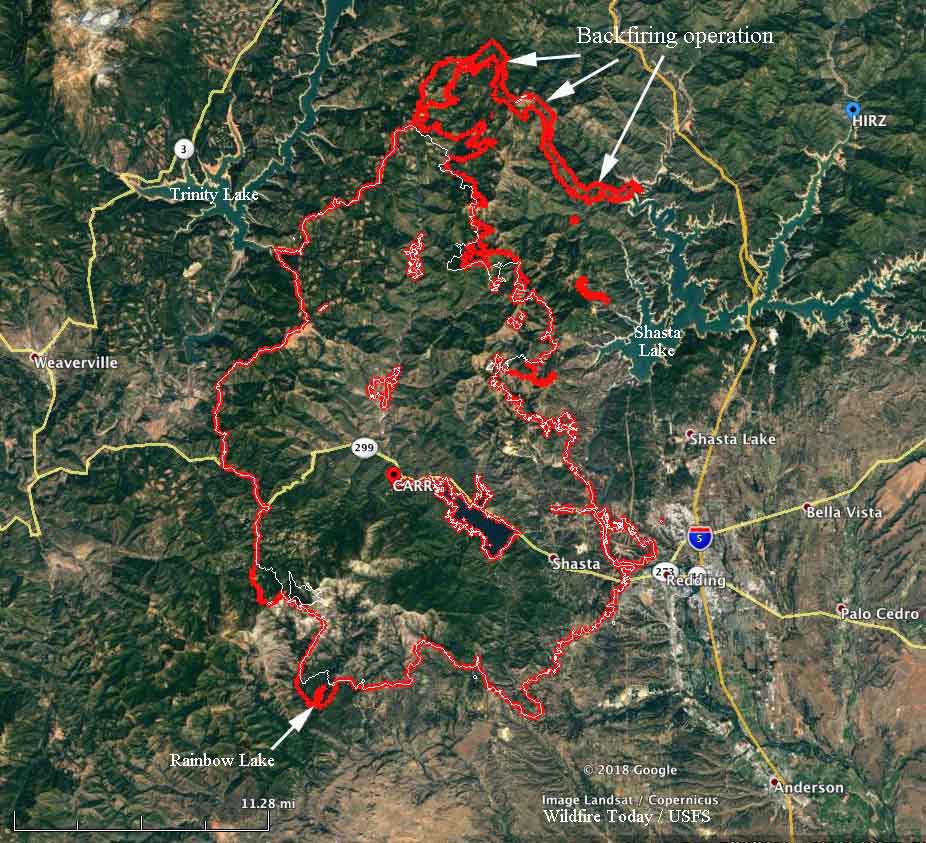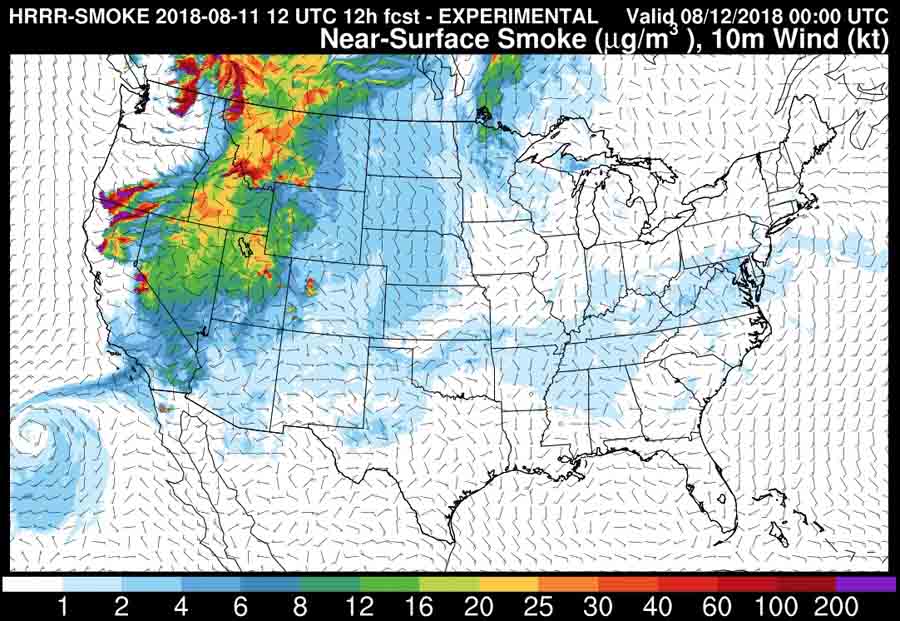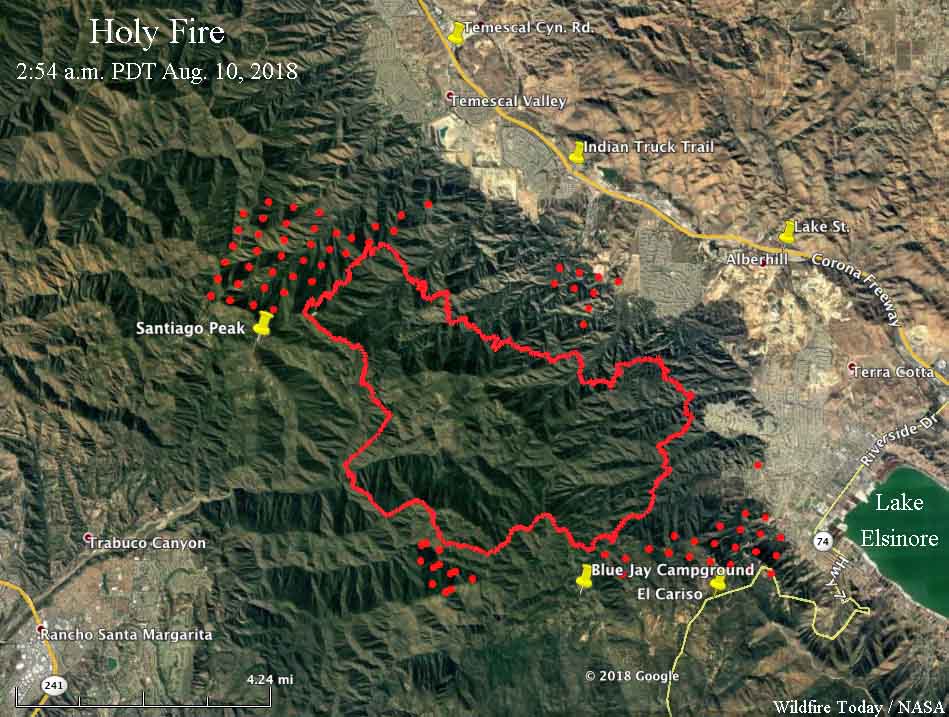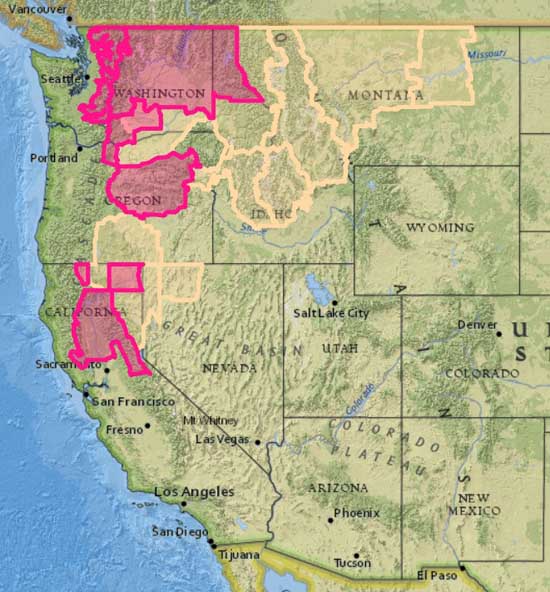Above: The Vineyard Fire near Hot Springs, South Dakota, August 11, 2018. Photo by Kathleen Ryan Anderson.
(UPDATED at 4:08 p.m. MDT August 13, 2018)
The incident management team has lifted all evacuations on the Vineyard Fire at Hot Springs, South Dakota, including all pre-evacuation notices.
The outlook for the fire has improved so much that the order for the higher level incident management team, the Type 2 team, has been cancelled.
Updated mapping shows that today, August 13, the fire has burned 560 acres. Fire officials estimate it will be fully contained on Friday, August 17.
No injuries have been recorded and no structures have been destroyed.
Firefighters have been taking advantage of cooler temperatures and higher humidities to slow the spread of the fire. In addition to the dozers that are constructing fire line, the team is waiting for additional hand crews to arrive so they can put in line where the dozers can’t work.
(UPDATED at 8 p.m. MDT August 12, 2018)
With the Vineyard Fire spreading further to the north and closer to dense residential areas, Sunday afternoon fire officials issued a “pre-evacuation notice” for homes on the east side of Hot Springs, SD affecting 3rd, 4th, 5th, and 6th streets all the way north to the Veterans Administration Hospital. Then minutes later it was upgraded to a full mandatory evacuation. About two hours after that at 6:45 p.m. all mandatory evacuation notices were lifted by Incident Commander Ray Bubb, including not only the most recents ones on 3rd through 6th streets, but all of the others along Fall River Road. As of Sunday evening the areas have been downgraded to a pre-evacuation notice status, fire spokesperson Joe Johndreau told us at 7:40 p.m. Sunday.
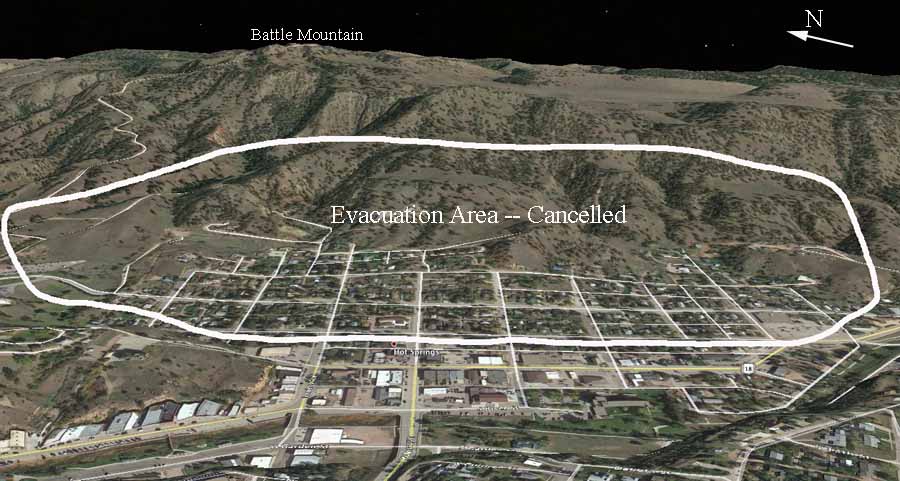
The Fall River Sheriff’s Office wrote on their Facebook page:
The Evacuation Order has been lifted for all residences including those in city limits as well as the Eagle Valley area. Please keep your bags at the ready incase there are any changes.
It can happen, but it is unusual for an area near a fire to go, within a three-hour period, from no evacuation, to pre-evacuation, to full evacuation, and back to pre-evacuation status. We asked Mr. Johndreau about the reason for the changes. He said Incident Commander Ray Bubb said that the firefighters had a very good day Sunday and accomplished so much that it became safe for the residents to return to their homes.
Mr. Johndreau said Air Attack, who spent hours circling over the fire in a fixed wing aircraft, estimated Sunday evening that the fire has grown to 468 acres.
In addition to the Air Attack ship, other fixed wing aircraft on the fire Sunday included two Single Engine Air Tankers (SEAT) and one four-engine jet, Tanker 41, a BAe-146 operated by Neptune Aviation. There was also at least one Air National Guard Blackhawk helicopter and, Mr. Johndreau said, possibly other helicopters.
On Sunday the fire was managed by a Type 3 Incident Management Team, but a higher-qualified Type 2 Team has been ordered. The main differences between the teams is that the members of a Type 2 team have more experience and have to meet more stringent qualification requirements. The Type 2 Team is also larger by a factor of two or three and will arrive with more overhead personnel than the Type 3 Team had. They don’t come with firefighters or firefighting equipment, except for the organization structure of managers in the Operations Section, including Division Supervisors, Operations Section Chiefs, and aviation managers. The actual on-the-ground-firefighters will need to be ordered with the same process the Type 3 Team was using. The next level up is a Type 1 Team — a Type 2 Team on steroids.
(UPDATED at 12:42 p.m. MDT August 12, 2018)
The Vineyard Fire southeast of Hot Springs, SD grew by about 50 acres Saturday night, primarily on the east side, to bring the total to about 180 burned acres. More firefighting resources are expected to be available Sunday.
The areas under evacuation orders are listed at the Fall River County website.
Fall River Road (Hwy 18/385) is open but fire officials are asking residents to avoid the area if possible.
The map below shows the APPROXIMATE location of the Vineyard Fire, based on satellite data from 3:13 a.m. August 12. The fire could have spread through light vegetation on the top of the hill, such as grass, and then cooled making it impossible for the heat sensors on the satellite to detect the fire at those locations. The satellite is on a polar orbit and passes over twice a day.
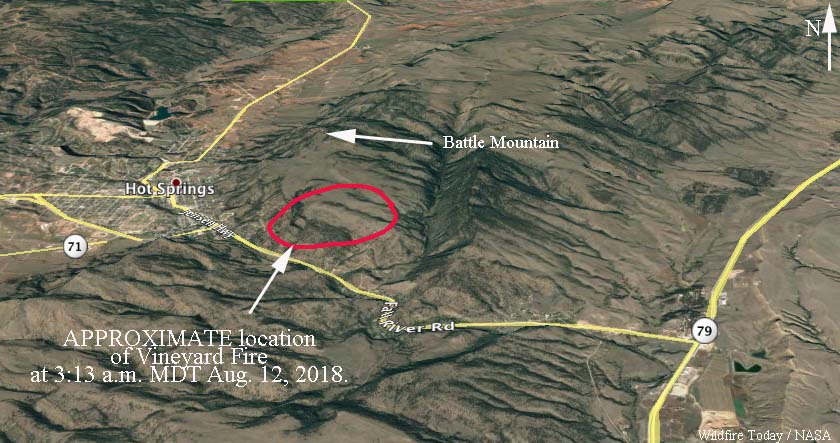
Weather forecasters have added the southern Black Hills to Sunday’s Red Flag Warnings, for hot, dry, and breezy conditions. The forecast for the fire area on Sunday predicts 93 degrees, 18 percent relative humidity, and 19 mph south winds gusting to 27. These conditions could result in fire behavior that challenges firefighters.
(We initially received incorrect information about who took the photo at the top of this article. We now know it was taken by Kathleen Ryan Anderson. We apologize for the confusion.)
(UPDATED at 10:55 p.m. MDT August 11, 2018)
By 8 p.m. Saturday the Vineyard Fire southeast of Hot Springs, SD had burned approximately 130 acres and was spreading north.
Late in the afternoon a second single engine air tanker and a large air tanker joined the fight, making retardant drops to assist firefighters on the ground who were protecting structures. Fire officials expect to have a helicopter and a Type 3 Incident Management Team working on the fire Sunday.
The Fall River County Sheriff’s Office is requesting evacuees to go to the Mueller Center in Hot Springs.
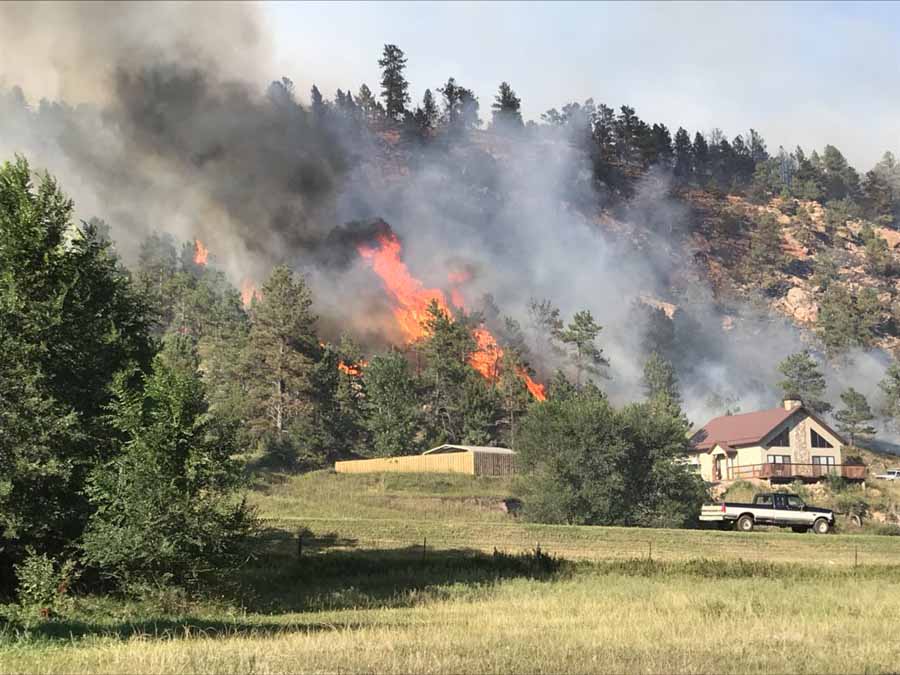
The high temperature at Wind Cave National Park north of Hot Springs on Saturday was 93, the relative humidity reached 21 percent, and the winds were 8 to 12 mph out of the south with gusts to 22. The forecast for the fire area calls for Saturday night temperatures to get down to 63 with 52 percent relative humidity and 10 mph south to southwest winds gusting to 14. On Sunday forecasters expect 95 degrees, 16 percent humidity, and south winds of 16 mph gusting to 25. Much of northwest South Dakota is in a Red Flag Warning area on Sunday, but most of the Black Hills, including the fire area, are outside the warning area.
(Updated at 6:48 p.m. MDT August 11, 2018)
A wildfire half a mile southeast of Hot Springs, South Dakota started at about 3:45 p.m. MDT August 11 and spread rapidly up slope above Fall River Road. It was attacked by local, state, and federal firefighters and a single engine air tanker that responded from Chadron, Nebraska.
Firefighters estimate it has burned approximately 80 acres and is threatening 70 structures. They have requested
It has been a rather quiet wildland fire season so far this year in South Dakota. Until today.
Resa Ru shot this video of the Vineyard Fire along Fall River Road about half a mile southeast of Hot Springs, South Dakota, August 11, 2018. Used with permission.
We will update this article when more information is available.

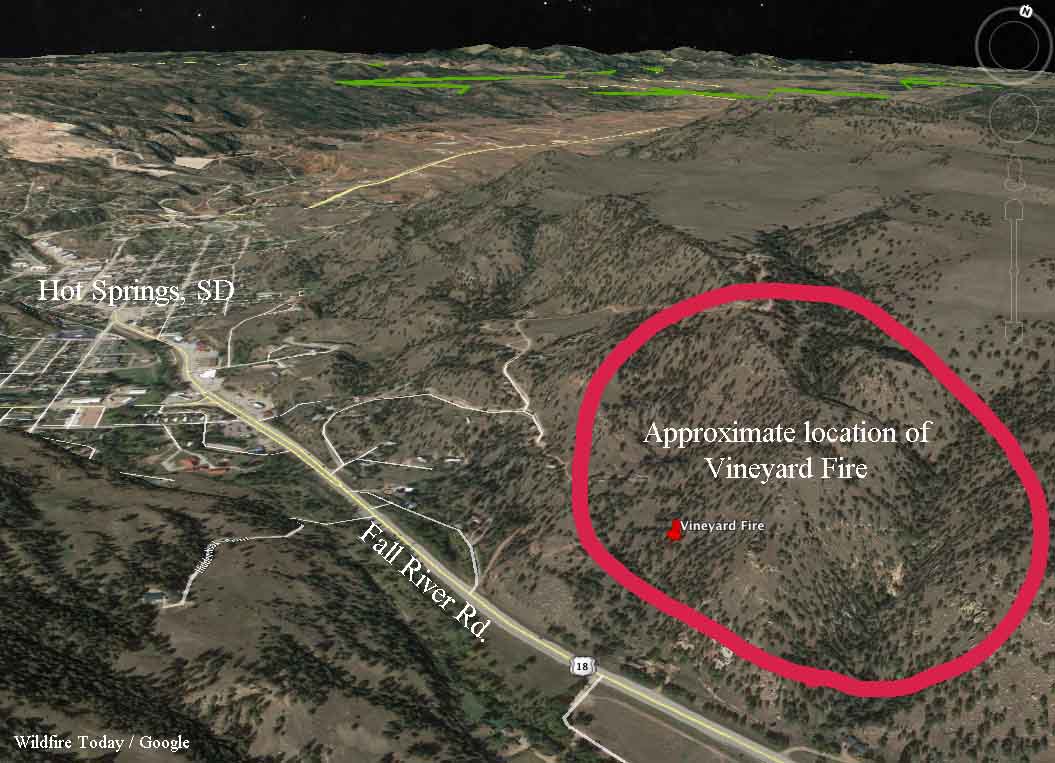
Thanks Resa, Kathleen, and Wendee!


